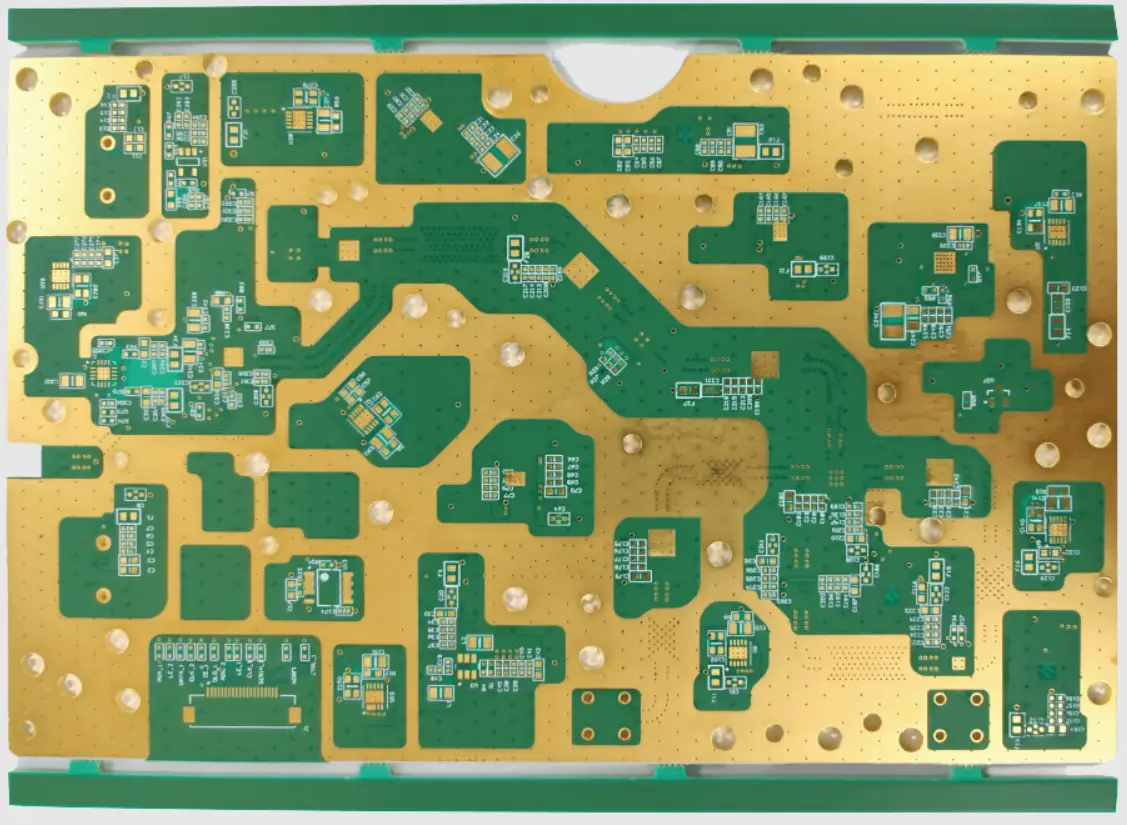RO4000® hydrocarbon ceramic laminates are designed to off er superior high frequency performance and low cost circuit fabrication. The result is a low loss material which can be fabricated using standard epoxy/glass (FR-4) processes off ered at competitive prices. The selection of laminates typically available to designers is signifi cantly reduced once operational frequencies increase […]
Rogers RO4000® series laminates, including RO4003C™ and RO4350B™, are advanced materials designed for high-frequency applications. They deliver excellent electrical performance, mechanical reliability, and are compatible with conventional PCB manufacturing techniques, making them ideal for RF, microwave, and high-speed digital circuits.
Rogers high-frequency laminates, including RO4003C, RO4350B, and RO4835, are widely used in applications requiring superior electrical performance and mechanical stability. These materials are essential in RF, microwave, and high-speed digital designs.
RO4000® Series Laminates are high-performance, cost-effective materials engineered for RF, microwave, and high-speed digital applications. This data sheet outlines the electrical, mechanical, and thermal properties of RO4003C™ and RO4350B™, enabling informed material selection and application design.
24GHz radar detection system mainly supports short-range detection (SRR), high frequency circuit board and high wavelength. Applicable boards: RO4835, RO4350B, RO4003C . Among them, RO4350B nitride ceramic laminate and RO4835 nitride ceramic laminate are highly recommended. These two series belong to the cost-effective series for people’s daily use.
RO4000 hydrocarbon ceramic laminates are designed to offer superior high frequency PCB performance and low cost circuit fabrication. The result is a low loss material which can be fabricated using standard epoxy/glass (FR-4) processes offered at competitive prices.
This study was conducted to evaluate dimensional movement of Rogers RO4350B
Product through the circuit fabrication process. The study was conducted using Six
Sigma tools and the DMAIC process as a guideline for the evaluation (Define, Measure,
Analyze, Improve, and Control). The Six Sigma project was initiated as a joint exercise between Rogers Corporation and printed circuit board manufacturer Cirtech Inc.
Prolonged exposure in an oxidative environment may cause changes to the dielectric properties of hydrocarbon based materials. The rate of change increases at higher temperatures and is highly dependent on the circuit design.
These guidelines were developed to provide fabricators basic information on processing double-sided and multi-layered printed wiring boards (PWB’s) using RO4003C™, RO4350B™ and RO4835™ laminates. Please refer to RO4400™ bondply processing guidelines for additional information on inner-layer preparation and multi-layer bonding.
As complexity and density increase, the long-term reliability of RF/microwave circuit components becomes more challenging to characterize. Printed Circuit Boards (PCBs) comprise numerous active and passive components, whose performance can vary over time and with operating environment temperatures. Additionally, PCB substrate materials, such as dielectrics, copper foil conductors, solder mask inks, and final finishes, may change over time, influenced by environmental conditions. Higher frequencies may experience changes in electrical performance over time, such as power and efficiency losses. These effects can occur in both short-term and long-term scenarios, often driven by thermal effects, particularly when operating in high-temperature environments.













